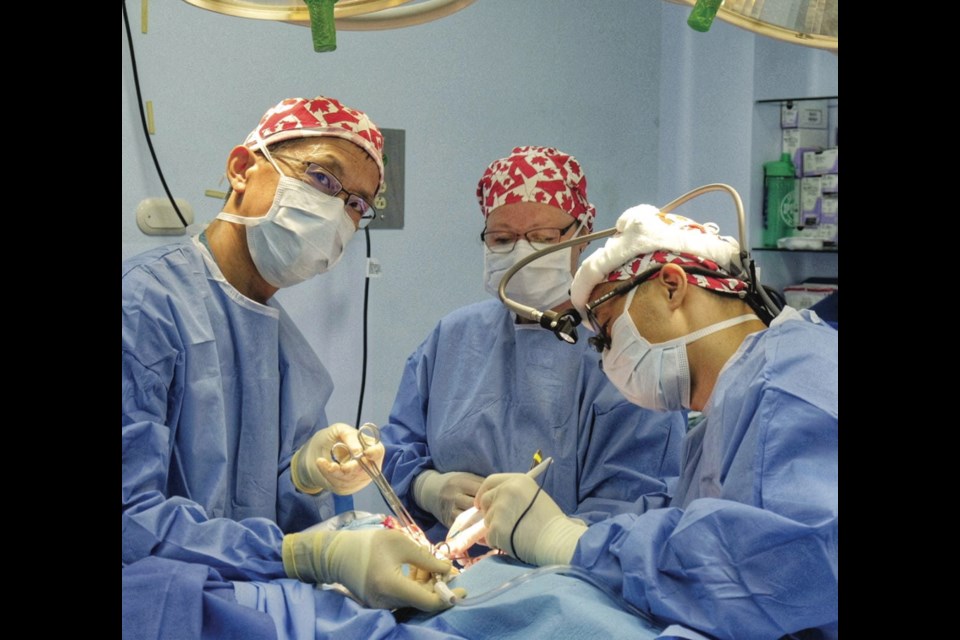On a medical-assistance trip to rural Guatemala seven years ago, Victoria anesthesiologist Dr. Brent Caton and his daughter Natasha watched a plastic surgeon operate on Mayan children who had been severely burned falling into their family cooking fires.
On this reconstructive plastic surgery mission, Caton learned that Dr. Lourdes Santizo is one of only a few plastic surgeons in the small Central American country who offers care to some of the country’s main burn victims. The Catons saw first-hand how receiving high-quality medical treatment can improve a person’s quality of life and affect those close to them.
They returned home humbled by Santizo’s dedication and inspired to continue her work in Guatemala. As he shared his experience after he returned home, Caton found many Victoria doctors and nurses were interested in helping ill and impoverished Guatemalans on future medical-assistance trips.
In 2014, the Caton family founded the CARE team, a Vancouver Island non-profit organization whose members volunteer one week a year, operating on patients at a Franciscan hospital in Antigua, Guatemala.
“The Catons were quite struck by what they saw there and the need,” said Victoria gynecologist Dr. Kellie Whitehill. “And five years in, it seems to be working quite well.”
Whitehill and her husband, vascular surgeon Dr. Matt Robinson, are preparing for their fifth surgical mission in the second week of July.
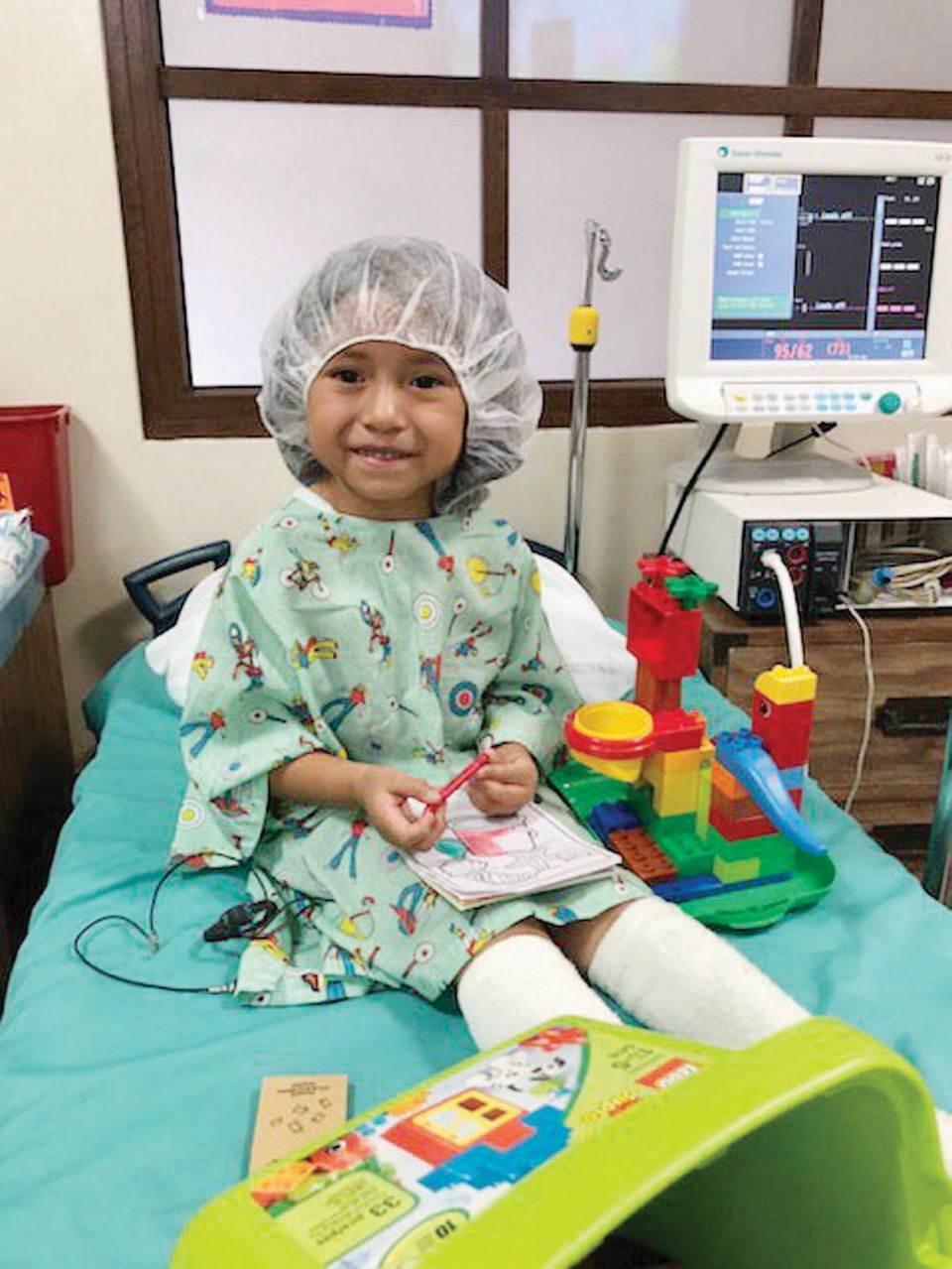
The mandate of the CARE team is to help those who do not have access to health care. It provides mostly general and gynecological surgery. However, in 2017, the team was able to reconnect with Santizo and provide her with an anesthesiologist and a doctor to assist her reconstructive plastic surgeries.
“We allowed her to be able to operate,” said Whitehill. “Supporting her made a huge impact on everybody in the team, and she continues to be someone we’d like to link up with.”
CARE team doctors helped Santizo operate on four-year-old Petrona. The little girl had fallen into a cooking pot and badly burned her chest and arms. Her arms, locked in a 90-degree angle, required complex surgery.
The CARE team helped her treat a little boy with a badly burned arm. The arm had been bandaged to his chest, and over the years, without surgery, it became fused to his chest.
Team members also assisted with the care of another little boy with a severe burn on his buttock. The boy had sat down on a pot by the fire that had just been used for cooking.
Many of the team’s general and gynecological patients have waited years, even decades, for a hernia repair or hysterectomy.
“I’ve wanted to do this my whole life,” said family doctor Darcy Nielsen, who will be on her third surgical mission to Guatemala in July with her husband, Gary Nielsen, also a family doctor.
“Here, people have options. There, they have no options. Honestly, I could weep thinking about it. It’s so incredible.”
In July 2015, the first Victoria CARE team ran two surgical rooms for a week at the hospital in Antigua, completing 53 surgeries.
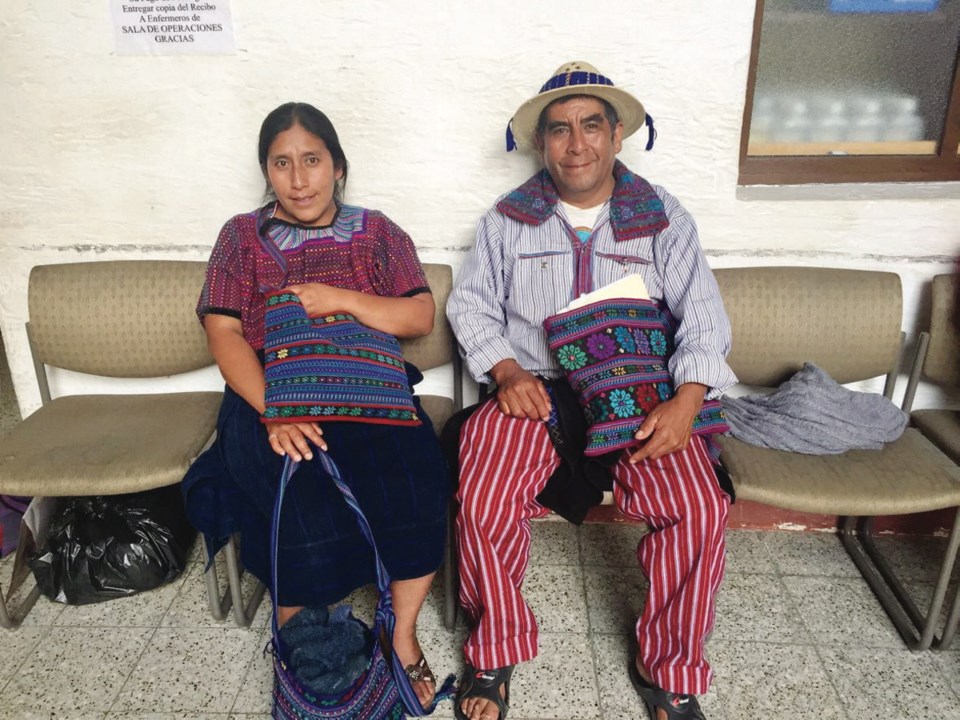
“We ran a general surgery room with Matt and a gynecology room for me and we found just enough bodies to come and run two surgical teams,” said Whitehill.
“We brought down two surgical assistants, two anesthesiologists, six OR nurses and three recovery-room nurses. We had just enough bodies to make it work, plus some non-medical volunteers to provide whatever additional support they could. It was a small group and it was amazing.”
Since the beginning, the team has worked in partnership with a Guatemalan non-profit organization affiliated with the U.S. group Partners for Surgery.
The Asociación Compañero Para Cirugía moves from village to village, going to rural communities in Guatemala five or six times a year to run triage clinics, said Whitehill.
“They advertise to the local villages and they come to the community and see patients who may need surgery,” said Whitehill, who also volunteered with the ACPC clinic last year. “You triage for an entire week to see who can be helped, who actually needs surgery and the kind of surgery they need.”
Most of the patients are members of the Indigenous Mayan population, which has been subjected to centuries of systematic oppression and continues to be largely deprived of access to vital health care. People in remote rural areas walk 10 to 12 hours to reach these villages in search of medical care.
“We were seeing 800 to 1,000 people in four days,” said Whitehill. “We do breast screening and pap smears and make a list of people who need surgery.”
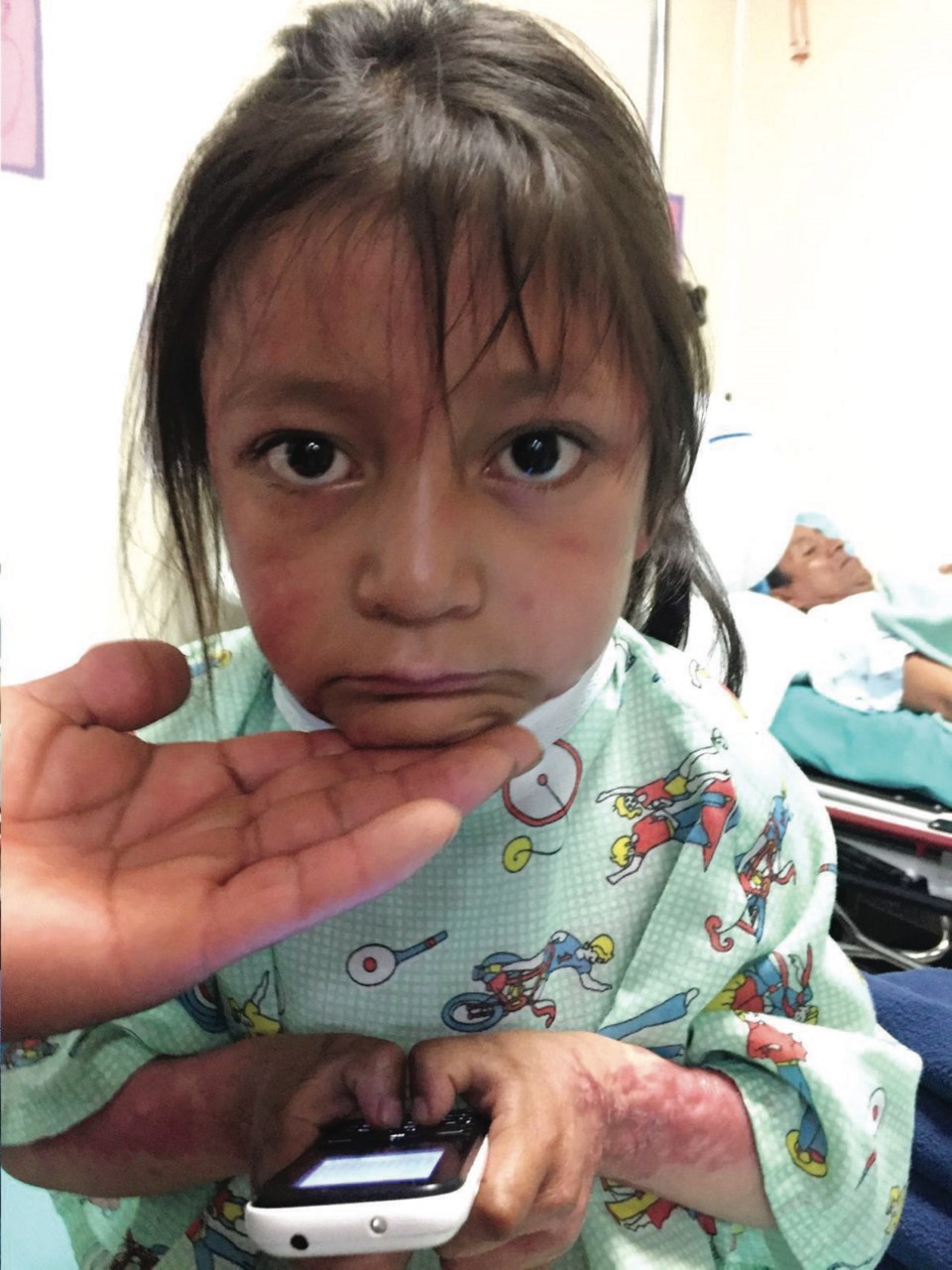
ACPC has health promoters who speak the Mayan dialect of the communities they work in. These translators are given a list of people and their illnesses. They receive a list of who needs surgery and when the surgery will be scheduled.
“The health promoters communicate with the patients and visit them and make sure they are ready for their surgery. They hop on the bus with them and spend two weeks with them when it’s time for surgery,” said Whitehill.
The team, now numbering more than 30, arrives on a Saturday in Guatemala City and takes a cramped bus ride to Antigua.
“You walk down in the morning and the hospital is full of people who have been brought down from the villages,” said Darcy Nielsen.
Mayan women are particularly disenfranchised, said Gary Nielsen.
“That’s why gynecology is such a big part of the services we provide. They are so under-served,” he said.
Whitehill operates on women with massive fibroids or severe prolapsed uteruses, which are painful and ulcerated.
“We’ll treat a woman whose uterus is dangling close to her knees. She’s got a family of 12 and a disabled husband. She’s been dealing with the problem for seven, eight or nine years,” said Gary.
“The spinoff is we’re often not just helping one person. We’re helping their 12 children, their husband and their community when they are able to return to farming.”
In July 2018, the team safely and successfully performed 81 operations.
When Victoria surgeon Darren Biberdorf went last year, “we worked him so freaking hard,” said Darcy.
“He did laparoscopic gallbladders until hell froze over. ”
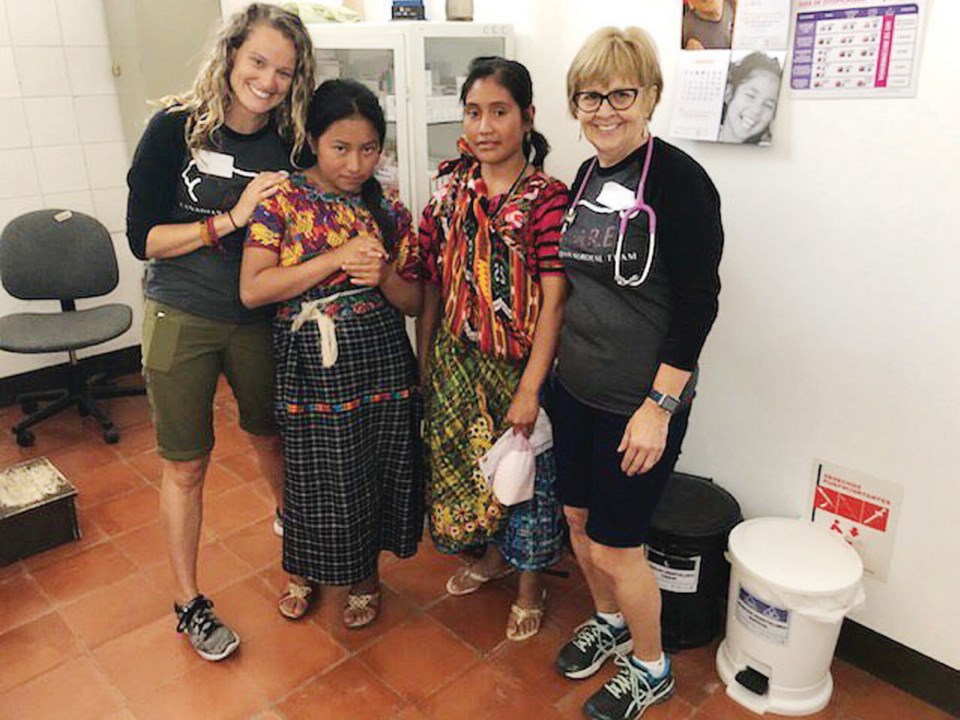
One of the first patients Darcy assessed was a 19-year-old who thought he had an abdominal, belly-button hernia. She quickly realized he had been born with a loop of his bowel sticking out.
“He probably should have died. He’d had it all his life. When Dr. Biberdorf told the mum he could fix it, in Spanish, through a translator, she just collapsed on the floor,” she said.
The surgeons repair painful hernias on Mayan farmers.
“We get those patients in as quickly as we can,” said Darcy. “Either the anesthesiologist or the surgeon grabs a mop and gets the blood off the floor while the nurse is counting for the next case. We can flip a room in 10 to 15 minutes.”
The goal is to provide care to the best of their ability, but there are limitations, said Whitehill.
“We operate fast and safely with all hands on deck because if we don’t operate on the patients that week, they’re going home and they might not come back again.”
Still, operations such as hysterectomies — done in Victoria with laparoscopic surgery, small incisions and much better recovery — are done there by opening the abdomen, said Whitehill.
The team relies on the health promoters to care for the patients and bring them home.
“What’s really nice is they also check on them after,” said Whitehill. “It’s operate. Make sure there’s no post-op infections. Make sure what you’ve done has worked. Make sure they’re back home safely. It’s nice to know there’s a version of post-operative care happening. That really made Matt and me happy the first year, so we’ve kept with them.”
One woman translator sat at the bedside of a patient all night to make sure the patient had someone to talk to, said Gary.
Everyone on the team pays their own expenses, but help is needed to raise $30,000 every year for patient care and surgical supplies.
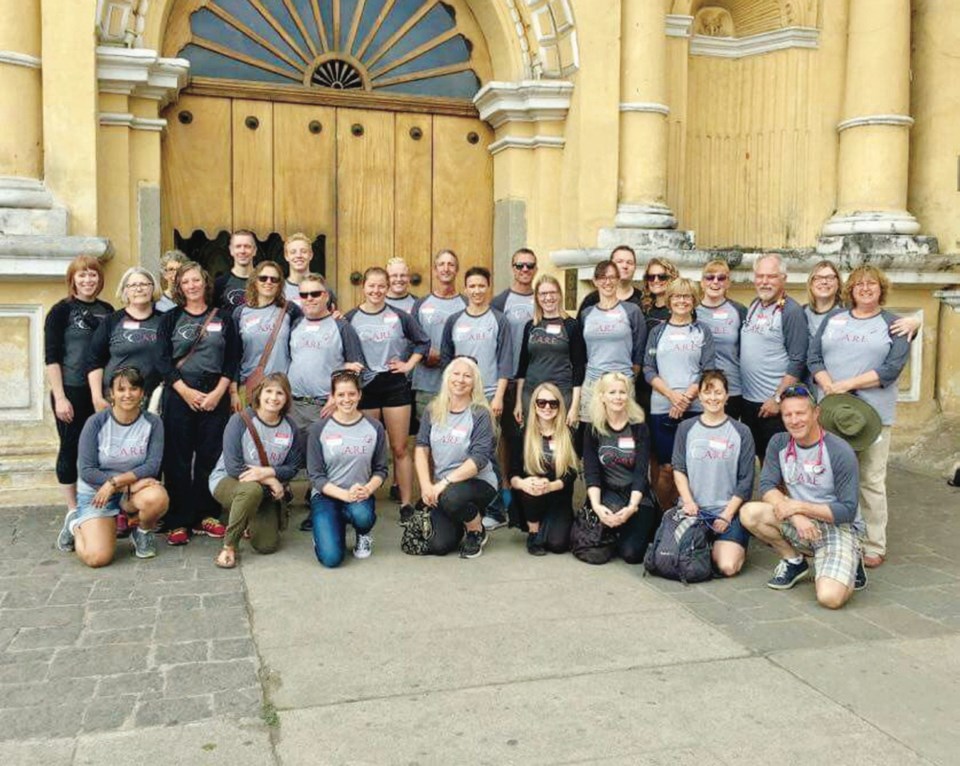
The team is also looking for large suitcases to bring surgical supplies to Guatemala.
“We carry down donated shampoo, toothpaste, toothbrushes, Advil and Tylenol for the post-op care,” said Darcy.
Each patient receives a personal care package when their surgery is scheduled. These basic supplies help promote best hygiene practices around the time of their surgery.
But money is needed for all the surgical supplies, drugs, dressings, surgical drapes, gloves, sponges, sutures and medications such as anesthetics, analgesics and antibiotics.
Several corporations provide operating-room packs at reasonable costs.
Last year, the CARE team brought four cases of veterinary supplies to a volunteer animal shelter.
“It’s so great to go down and really know you’re making a huge difference in other people’s lives,” said Darcy. “It has been a dream of mine to be able to help people this way and it is life-changing for these people.”
The group held a fundraiser in February and continues to raise money through the sa���ʴ�ý 10K run on April 28, concerts and other social events.
Another popular fundraiser, the Battle of the Dad Bands, is being held May 4 at the Capital Ballroom.
The Victoria-based CARE team recently started working in partnership with a Vancouver organization, Health for Humanity. Contributions can be made on their website — donors can use the comments box to direct their donations to the CARE Surgical Mission 2019, which begins the second week of July.
